Apple tree care in autumn and preparation for winter
Autumn is the golden season for harvesting apples. But this is also the time when you really need to take care of your apple tree with your sleeves rolled up.
Further in our article you will find useful tips and answers to most questions regarding how to care for an apple tree in the fall in order to properly prepare it for winter.
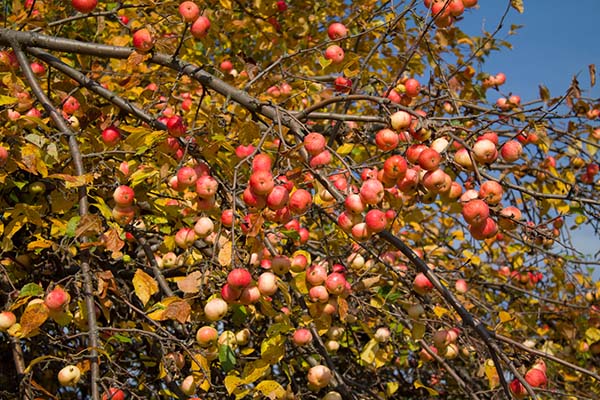
Content
- 1 What to do with apple trees in autumn: the main activities to prepare a fruit tree for winter
- 2 Top dressing of apple trees in autumn
- 3 Pruning apple trees in autumn
- 4 Processing apple trees in the fall from diseases and pests: eradicating spraying
- 5 Autumn whitewashing of the apple tree
- 6 Autumn water-charging irrigation
- 7 How to cover an apple tree for the winter: protecting young apple trees from rodents and freezing of the roots
What to do with apple trees in autumn: the main activities to prepare a fruit tree for winter
The main activities for the autumn care of the apple tree and its preparation for winter include the following:
- autumn feeding;
- pruning;
- cleaning the trunk circle from plant debris;
It is necessary to remove all plant residues (leaves, twigs, fallen fruits) from under the trees.
Important! If the tree does not hurt, then they (except for fallen fruits) can be thrown onto the compost heap. But if it hurt, then you need to either burn it, or bury it very deeply, or just take it out of the site.
- cleaning branches from old dead bark, various mosses and lichens;
- autumn eradication treatment against wintering pests and diseases;
- whitewashing (performed after processing).
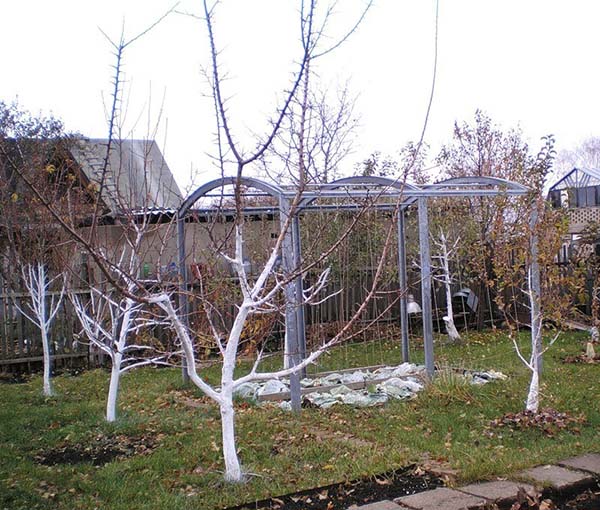
- water-charging irrigation and earth digging in the near-trunk circle;
- mulching and shelter for the winter (including protection of young apple trees from rodents).
Next, we will analyze in more detail each of the activities for the autumn care of the apple tree.
Video: how to care for an apple tree in autumn and prepare for winter
Top dressing of apple trees in autumn
Immediately after harvesting the apples, i.e. even in late summer - early autumn, it is highly recommended to feed your apple trees with mineral fertilizers containing large amounts of potassium and phosphorus.
As a rule, superphosphate and potassium sulfate are used for this, or simply potassium monophosphate (it is more expensive, but also more effective), or ready-made special "autumn" fertilizers.
Important! The site has a separate article about, how and what to feed apple trees in autumn.
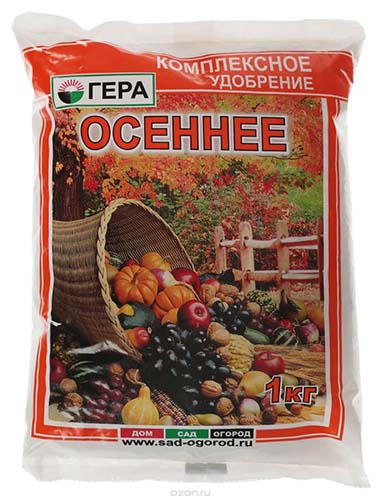
Pruning apple trees in autumn
As a rule, it is believed that fruit trees, including apple trees, are best pruned in early spring, however, in some cases, autumn pruning is also allowed.
The fact is that in the fall, trees suspend all active defense (their defense mechanisms stop), while fungal spores fly in myriads. In addition, at the onset of frost, the cambium freezes over, and wound healing is difficult. In other words, autumn pruning weakens all trees, their winter hardiness decreases. Therefore, it is believed that only winter-hardy breeds can be cut in autumn, which tolerate frost well and are not at all afraid of freezing.
In general, as a rule, in autumn, they carry out sanitary pruning of the apple tree, i.e. get rid of dry, broken and diseased branches.
Advice! On the site you can find separate and complete information on pruning apple trees in the autumn in this material.

By the way! If you decide that it is still better to postpone the pruning for the next year, then the site also has material about the timing and rules of spring pruning of apple trees.
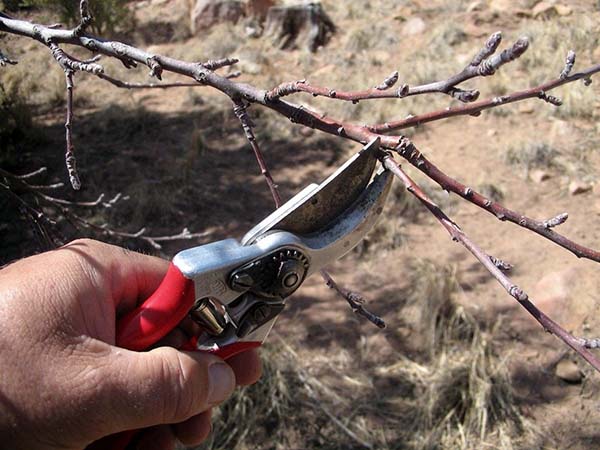
Processing apple trees in the fall from diseases and pests: eradicating spraying
The purpose of this event is quite clear from its name, i.e. you need eradicate all remaining pathogenic fungi and insect pests (including their eggs) so that they could not overwinter on / in the bark and near-trunk circle.
As for the timing, the autumn eradicating spraying of the apple tree is carried out only after all the foliage has fallen from the tree, the plant completely goes into a state of dormancy, its buds will “close” and become inaccessible to the ingress of powerful and strong solutions (that is, they will not burn), with which we will spray the tree.
However, it is also not worth delaying too much: it is important be in time before the onset of stable frosts, otherwise the preparations (fungicides and insecticides) simply will not work and the procedure will become meaningless (as a rule, most agents are effective at +5, but there are some at +10, so read the instructions carefully).
As preparations for the autumn processing of apple trees, they are most often used inkstone in combination with urea or Bordeaux liquid.
You need to process everything 1 time.
Advice! About, how and how best to treat an apple tree from diseases and pests in the fall, detailed in this separate article.
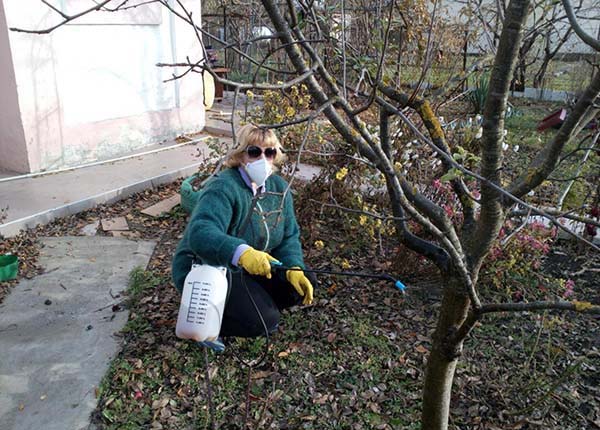
Video: autumn eradication spraying of fruit trees (apple trees)
Note! If you processed the apple tree in the fall, this does not mean that to spray in early spring not necessary - still as necessary. Autumn eradication spraying actually similar to early spring garden processing (the very first, it is also called eradicating).
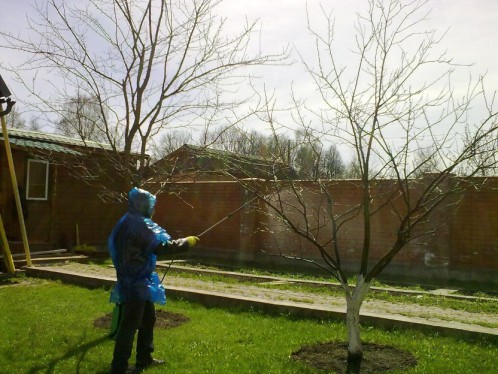
Autumn whitewashing of the apple tree
The purpose of this event is prevent frostbites (sunburn), cracks on the bark, which are formed due to temperature changes (plus-minus-plus-minus) in the transitional winter-spring period (in February-March).
Note! therefore whitewashing in the spring (in April-May) does not make any senseapart from the aesthetic. It's another matter if you come to the dacha in late February or early March and whitewash. Then it's another matter, but how many people do this?
Accordingly, you need to whitewash old trees, and especially young ones. But when whitewashing the trunks of young seedlings, weaker solutions should be used (if you use lime, then its concentration should be reduced by 2 times) so as not to burn the young bark. Or you can use special paints for whitewashing garden trees: buy the same water-based or water-based paint, or acrylic paint. But it is imperative to whitewash, since young seedlings have a very thin bark, which can easily be damaged in late winter or early spring from sunburn (it simply bursts due to temperature differences).
By the way! The site already has an article about when and how to whitewash an apple tree in autumn (and any fruit trees).
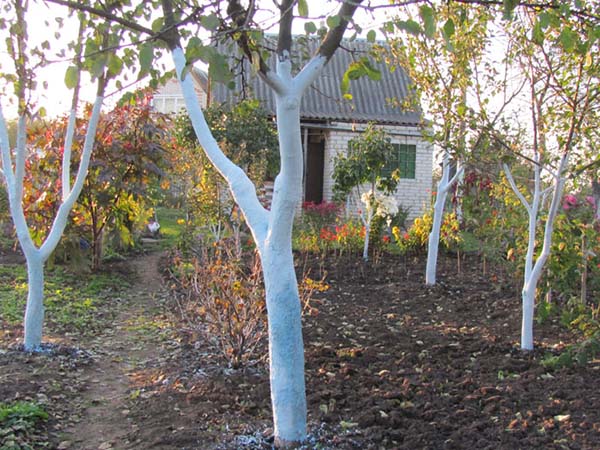
By the way! There is a not unfounded opinion that very young seedlings with smooth bark it is better not to whitewash, but to wrap the barrel with white covering material (spunbond ribbons)... So you not only prevent sunburn, but also protect the seedling from rodents (more on this in the next paragraph).
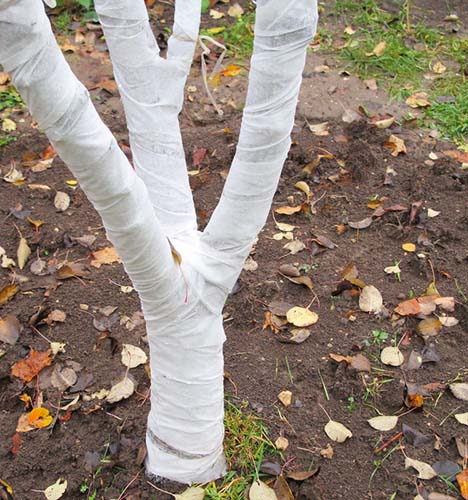
Autumn water-charging irrigation
It is also called "water charging" irrigation or "winter" irrigation.
The purpose of the autumn water-charging watering of the apple tree is also to better prepare the tree for winter by "filling" it with moisture. The fact is that moist soil freezes less and has greater thermal conductivity, in other words, the heat from the lower layers of the soil will warm up the roots of your apple tree.
Advice! Accordingly, moisture-charging watering is recommended for all fruit trees and berry bushes.
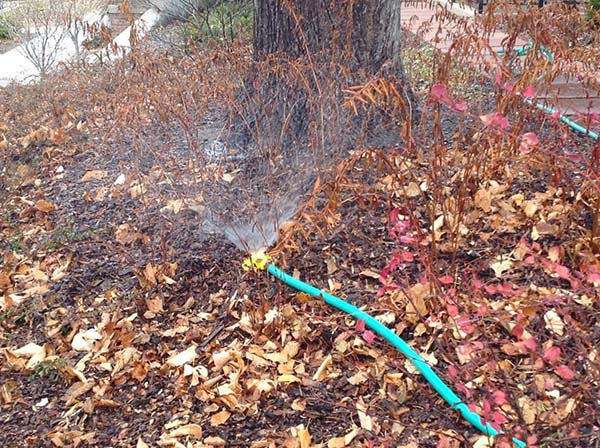
When to conduct?
- With the beginning or after the fall of leaves, on the eve of cold weather (at a positive temperature).
When is winter watering especially necessary?
- If you have sandy loam soil and autumn does not indulge in frequent and heavy rains, the winter is not snowy.
It is worth understanding! Of course, if a very rainy autumn is issued, then you can completely do without additional moisture.
How much water is required?
- Approximately 40-100 liters of water per 1 square meter of the trunk circle (for young - 40-50 liters, for adults - 80-100 liters), i.e. you need to calculate the area according to the crown projection (its perimeter). The more mature and massive your tree is, the more water you need: from about 50 to 200 liters.
Advice! Naturally, you don't need to carry any buckets: take the hose and move it around the trunk circle (and first measure how many minutes it takes for the water to enter the bucket. For example, if in 30 seconds, then 5-10 minutes will be enough).
Video: what is water-charging irrigation and how to carry it out correctly
Advice! And after watering (for example, the next day) it is very desirable also loosen the soil in the near-barrel circle, because loose earth freezes less.
Of course, if you have a good layer of sod under the trees or grass (lawn) just grows, then you do not need to touch it.
How to cover an apple tree for the winter: protecting young apple trees from rodents and freezing of the roots
The last stage of autumn care for an apple tree is its direct preparation for wintering.
It is quite obvious that an adult apple tree is a completely frost-resistant crop that does not require any shelter for the winter. However, a young apple seedling (e.g. planted only this fall or more in the spring) still needs some protection, and first of all not from frost, but from rodents and hares, as well as from sunburn.
So, in order to protect a young apple tree from hares and rodents (mice) that like to gnaw the bark, you need wrap (more precisely, bandage) the lower part of the trunk from the ground itself to the skeletal branches special protective non-woven (= breathable) material, for example lutrasil or spunbond, burlapbut by no means a filmotherwise your tree underneath it will blow out.
By the way! In this case, you even no need to whitewash the treesince white non-woven fabric and will have a protective function to prevent sunburn (i.e. will act as a reflector of sun rays).
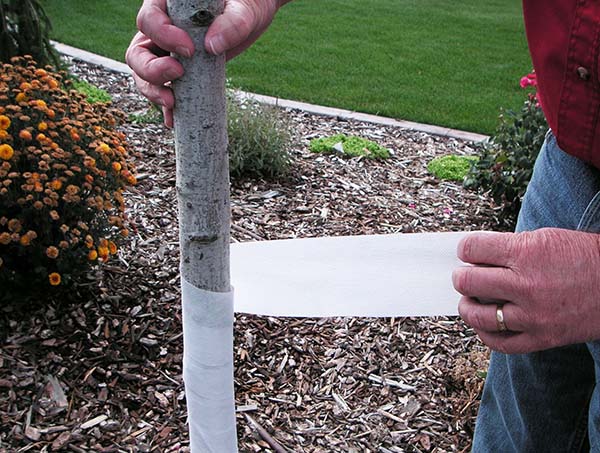
Or you can buy finished tape for wrapping trunks of fruit trees for the winter.
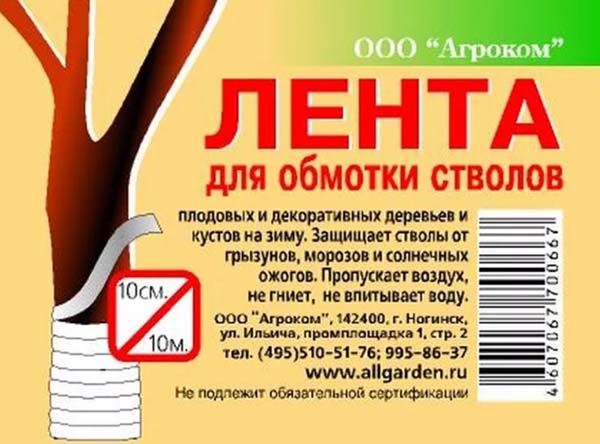
And some gardeners even put metal mesh frame.
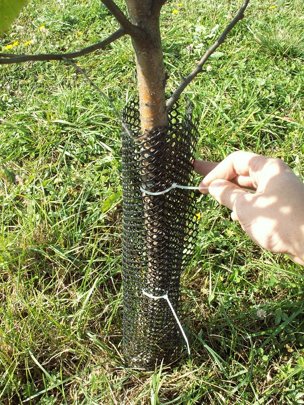
Advice! If rodents or hares have seriously damaged the bark of your apple tree, so to speak, gnawed with a ring, then in order to save the tree, you will need it plant in spring with a bridge, which is described in detail in this article.
Video: how to cover an apple tree in the fall for the winter
Thus, now you know how to properly care for an apple tree in the fall to prepare the tree for winter. And if you do everything according to your mind, then next year you definitely expect an increase in the harvest.
Video: how to properly prepare fruit trees for winter

